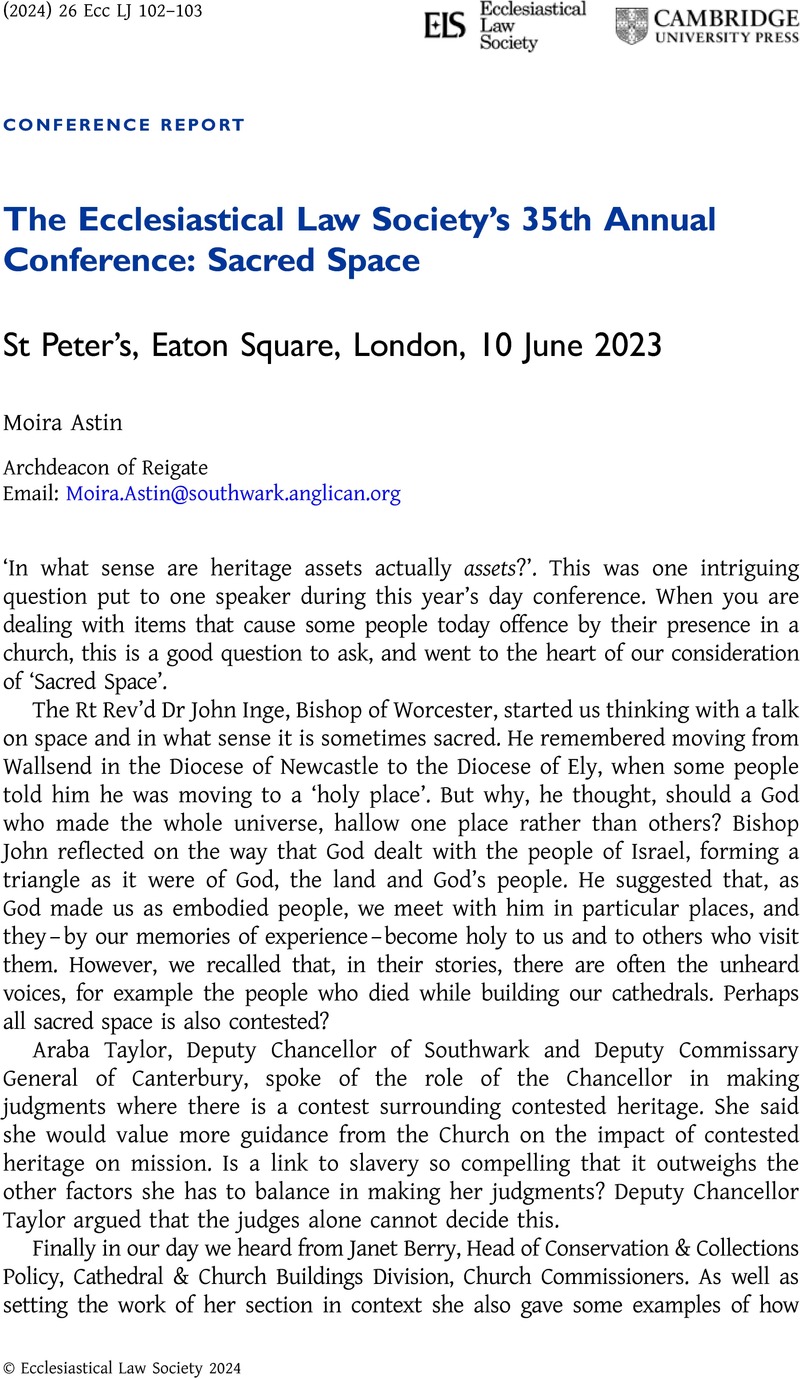No CrossRef data available.
Article contents
The Ecclesiastical Law Society's 35th Annual Conference: Sacred Space
St Peter's, Eaton Square, London, 10 June 2023
Published online by Cambridge University Press: 18 January 2024
Abstract
An abstract is not available for this content so a preview has been provided. Please use the Get access link above for information on how to access this content.

- Type
- Conference Reports
- Information
- Copyright
- Copyright © Ecclesiastical Law Society 2024



